Physiology > QUESTIONS & ANSWERS > PSY-255 Quiz 3: Chapters 7-8 questions with all correct answer solution 2020 (All)
PSY-255 Quiz 3: Chapters 7-8 questions with all correct answer solution 2020
Document Content and Description Below
PSY-255 Quiz 3: Chapters 7-8 questions with all correct answer solution 2020 Please fill out the ScanTron form with your answers and please do not forget to fill in the bubbles with your name! 1. W... hich of the following assumptions underlies the trait approach to personality? A. Each person belongs in one and only one personality category. B. We can place a person somewhere along a continuum of behaviors. C. People in one personality category are distinctly different from people in other categories. D. Personality can change as a function of the situation the person is in. 2. If we say Ted is high on the personality trait of assertiveness, we would expect that he will act assertively A. all of the time. B. more often than someone low in assertiveness. C. in some situations that call for assertiveness, but not in others. D. because he puts himself in situations that call for assertion. 3. Which approach to personality has relatively little to say about why people behave the way they do? A. Trait B. Psychoanalytic C. Behavioral/social learning D. Cognitive 4. Traits were introduced into the field of personality psychology by A. Gordon Allport B. Raymond Cattell C. Carl Jung D. Henry Murray 5. A man is said to have one personality trait that dominates his personality. Allport would identify this personality trait as a A. common trait. B. central trait. C. cardinal trait. D. secondary trait. 6. A psychologist collects data from a large number of people. She places each person on a continuum ranging from high to low conscientiousness and makes predictions about how people in the high range will act compared to those in the low range. This psychologist is using which approach to understanding personality? A. Type approach B. Nomothetic approach C. Idiographic approach D. Common trait approach 7. Allport called the five to 10 traits that best describe an individual’s personality A. central traits. B. common traits. C. cardinal traits. D. the Big Five. 8. Personality psychologists use factor analysis to help them determine A. a person’s central traits. B. which personality traits correlate together. C. the stability of personality traits over time and situations. D. the validity of personality trait measures. 9. Alicia has an active imagination and a strong intellectual curiosity. She likes new ideas and unconventional ways of looking at problems. Alicia is probably high in A. agreeableness. B. neuroticism. C. conscientiousness. D. openness. 10. People high on the __________ dimension are helpful and sympathetic to others. A. agreeableness B. openness C. conscientiousness D. psychoticism 11. Tonya often becomes upset over daily stressors. More than most people, she experiences such emotions as sadness, anger and anxiety. This description of Tonya is best accounted for by which of the factors in the five-factor model? A. Agreeableness B. Neuroticism C. Extraversion D. Openness 12. Compared to most of us, individuals who score high on Openness are more likely to A. tell a stranger all about themselves. B. change their self-concept. C. make friends easily. D. consider new ideas. 13. Julie sets high goals for herself at work. She is more committed to reaching these goals than most employees. She is organized, works hard, and remains persistent in the face of obstacles to reaching her work goals. Julie would probably score high on a measure of A. extraversion. B. agreeableness. C. openness. D. conscientiousness. 14. Test-takers who “fake good” A. are able to fool most test givers with their inaccurate responses. B. are not likely to be detected unless they admit that they are faking their test answers. C. are trying to present a better image than is accurate. D. are not aware that they are distorting their responses to create a false image. 15. A psychologist knows the man he is testing wants to be admitted into the psychiatric ward of the hospital. With which problem should the psychologist be concerned? A. Faking good B. Faking bad C. Social desirability D. Acquiescence response 16. Monroe is very competitive at work and when playing sports with his friends. He often takes work home with him in the evening and frequently eats lunch at his desk so he can do two things at once. He gets very frustrated and sometimes angry when he can't do something well the first time. Monroe could best be classified as a(n) A. extravert. B. Type A person. C. person high in need for Achievement. D. person high in need for Power. 17. Most research identifies the “toxic component” in the Type A behavior pattern as A. achievement striving. B. control motivation. C. time urgency. D. hostility. 18. People high in social anxiety report that their anxiety often is very painful and that they desire to be more sociable. This finding helps us distinguish between social anxiety and A. shyness. B. introversion. C. neuroticism. D. low self-esteem. 19. Research has identified each of the following except one as characteristic of people high in social anxiety. Which one? A. They avoid making eye contact. B. They frequently ask friends to help them. C. They expect their conversations to go poorly. D. They interpret feedback from others in a negative light. 20. Some researchers believe that evaluation apprehension is the underlying cause of social anxiety. This means people high in social anxiety A. are afraid of being graded or tested. B. do not like to meet new people. C. are afraid to speak in front of a large audience. D. are afraid of what other people will think of them. 21. Researchers have found an association between health and each of the following personality variables except one. Which one? A. Type A B. Negative affect C. Dispositional optimism D. Affect intensity 22. One reason dispositional optimists handle stressful situations better than pessimists is that optimists A. have more friends to help them. B. use different kinds of coping strategies. C. have more successes in life to pick them up. D. are more likely to use active coping strategies. 23. Researchers find that people who are high in _______ typically achieve more than the average person. A. affect intensity B. dispositional optimism C. social anxiety D. emotional expressiveness 24. Research has found that the strength of students’ immune systems was related to A. the number of exams they had per month. B. their level of optimism. C. pessimism about their health. D. the number of negative emotions they displayed. 25. A cognitive strategy designed to prepare oneself for stressful or anxiety-provoking invents (e.g., imagining the worst case scenario and asking yourself if you can handle it) is known as what A. defensive pessimism. B. defensive optimism. C. realism. D. negative cognitive style. [Show More]
Last updated: 1 year ago
Preview 1 out of 5 pages
Instant download
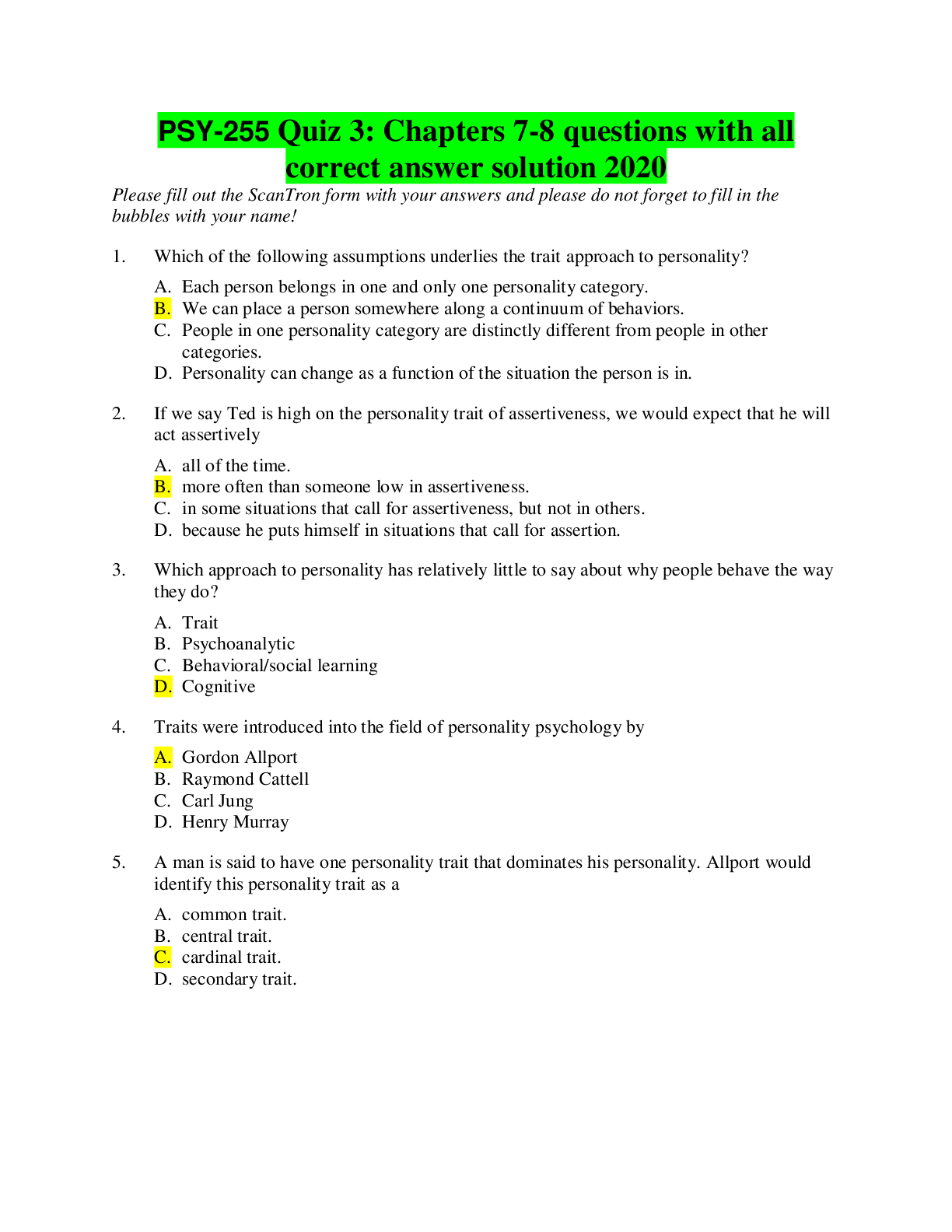
Buy this document to get the full access instantly
Instant Download Access after purchase
Add to cartInstant download
Reviews( 0 )
Document information
Connected school, study & course
About the document
Uploaded On
Oct 23, 2020
Number of pages
5
Written in
Additional information
This document has been written for:
Uploaded
Oct 23, 2020
Downloads
0
Views
41




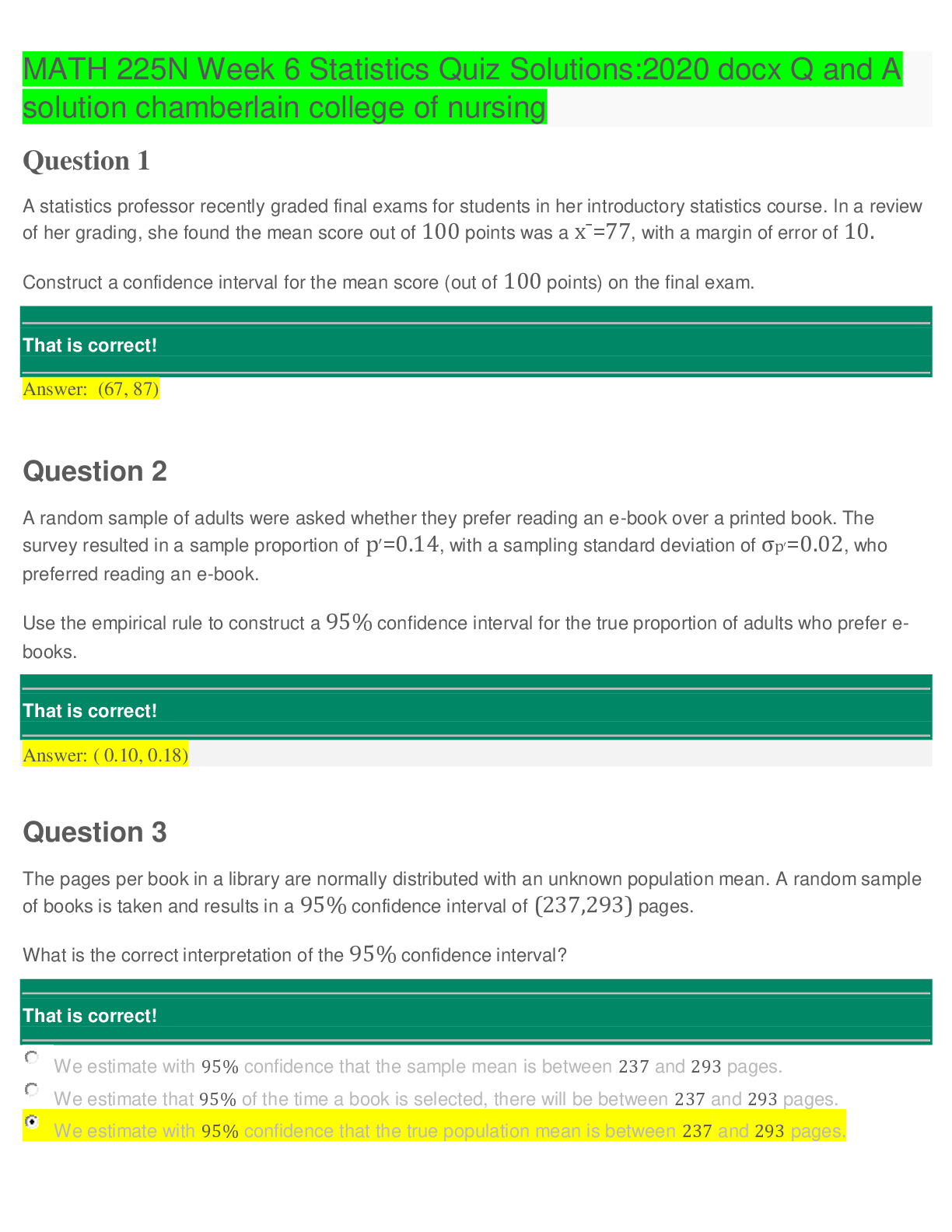

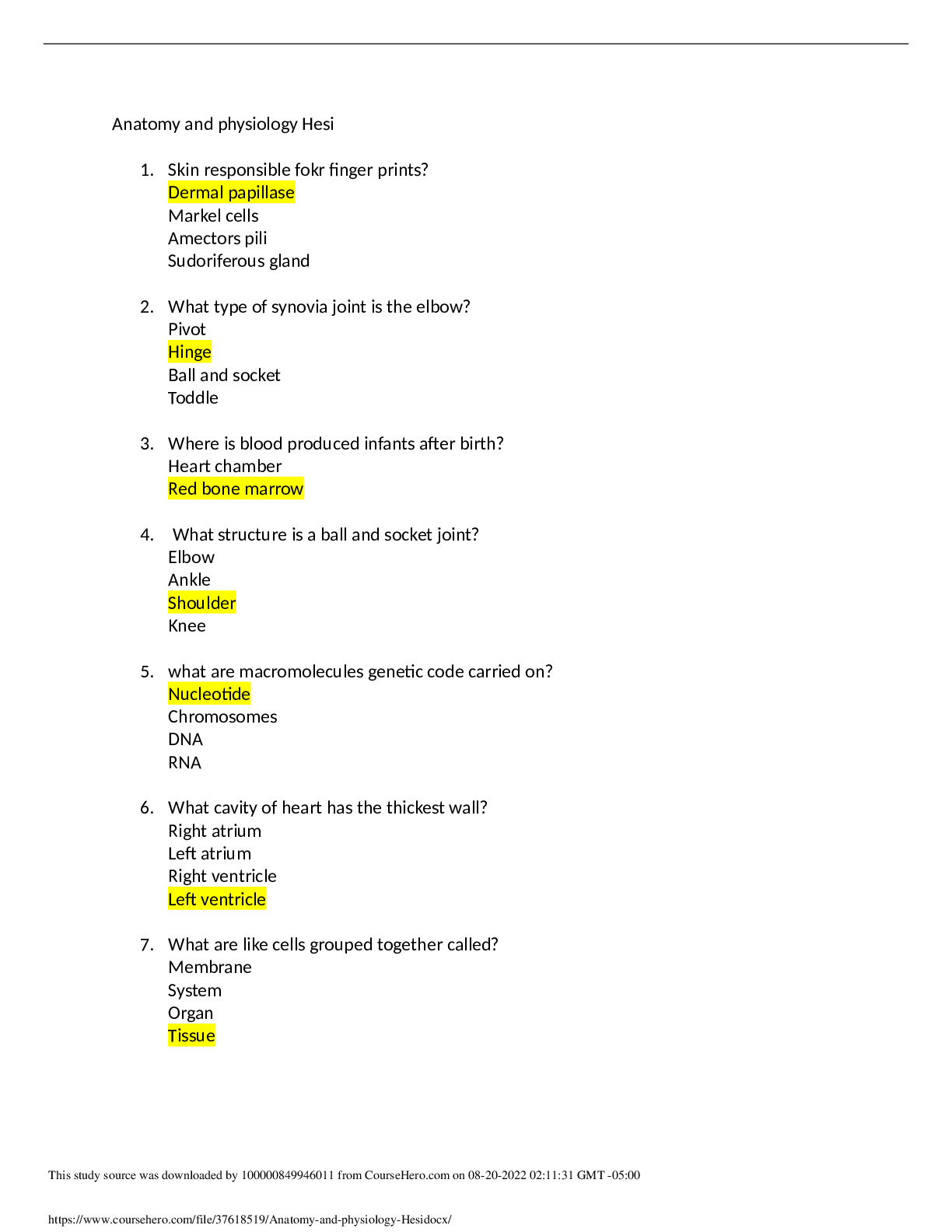
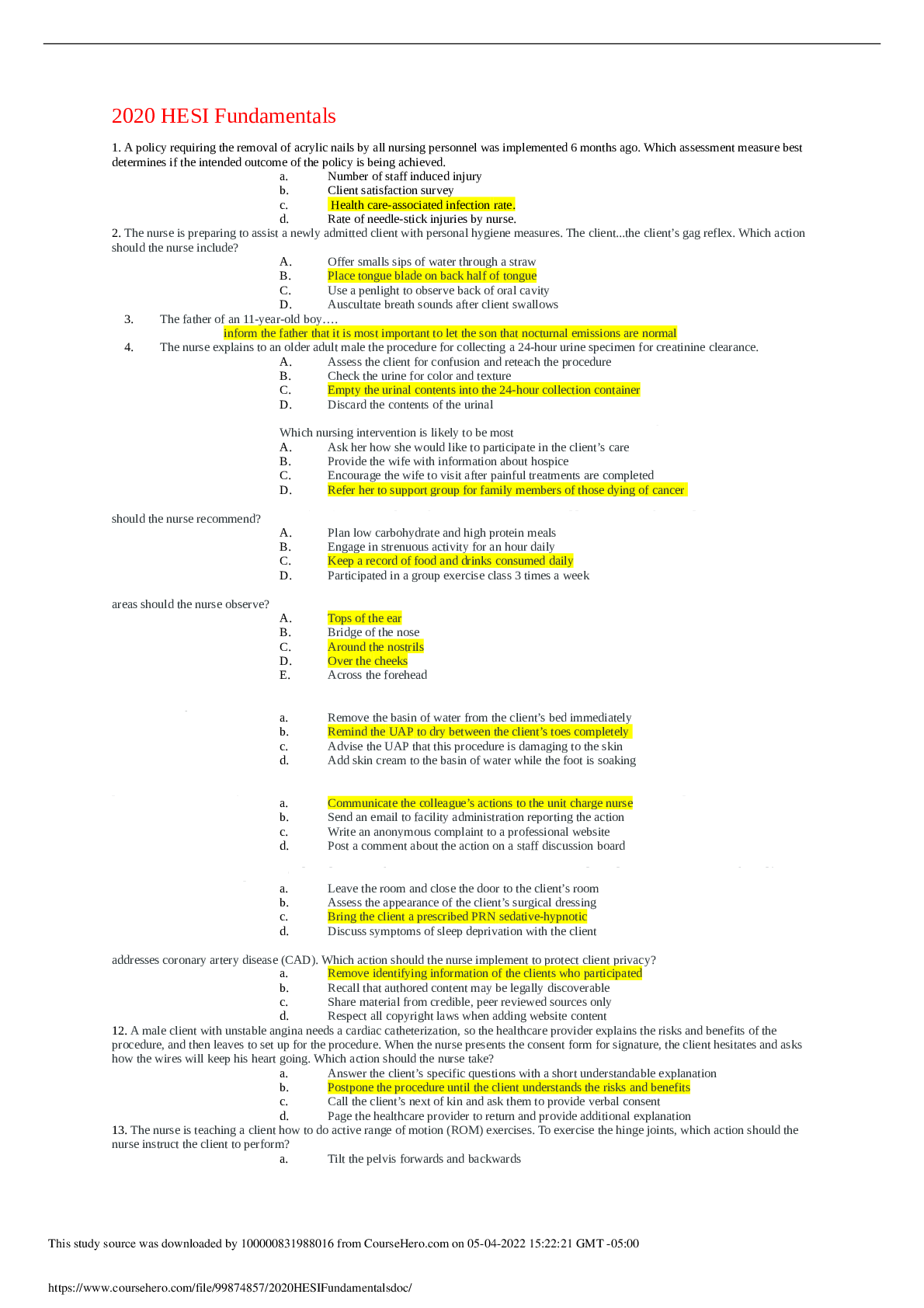

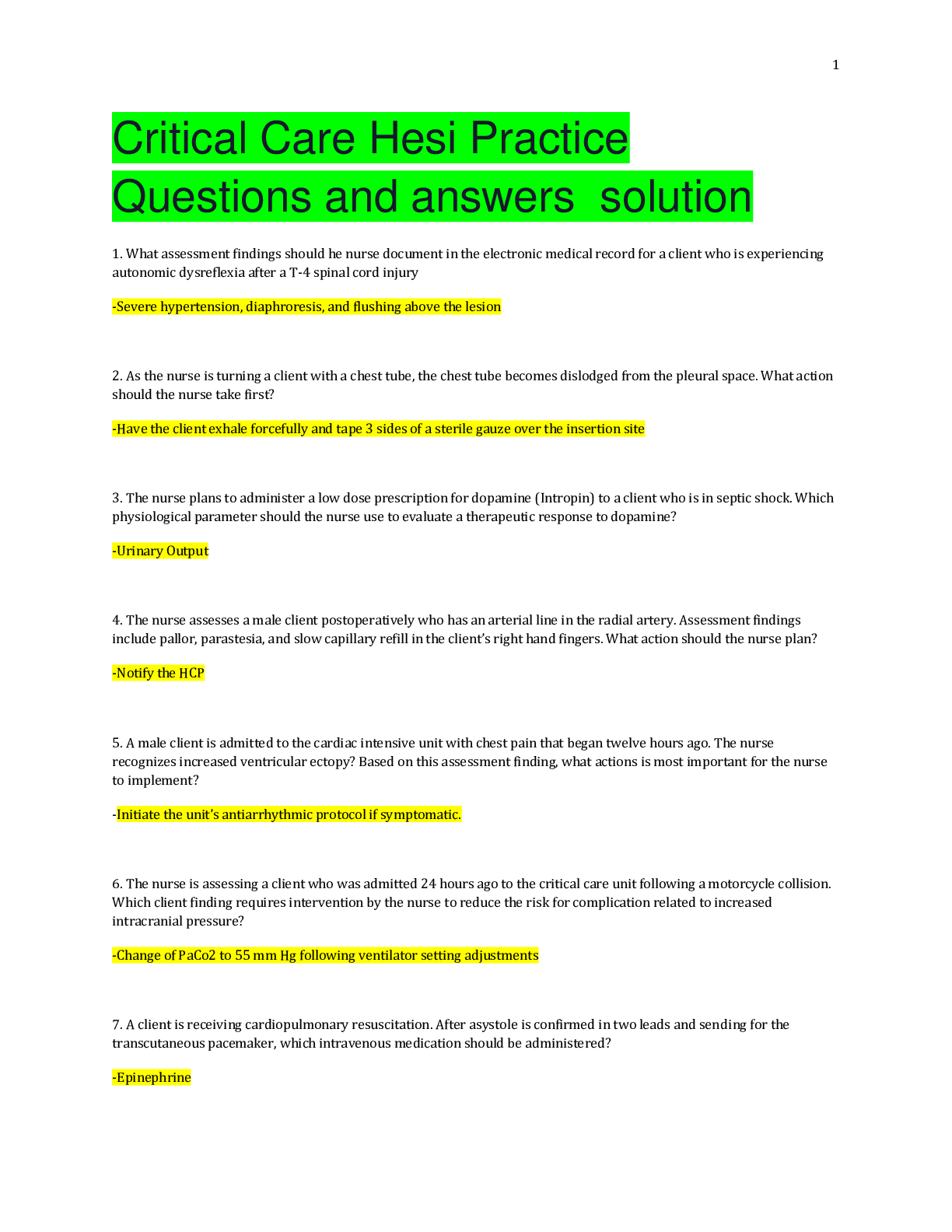
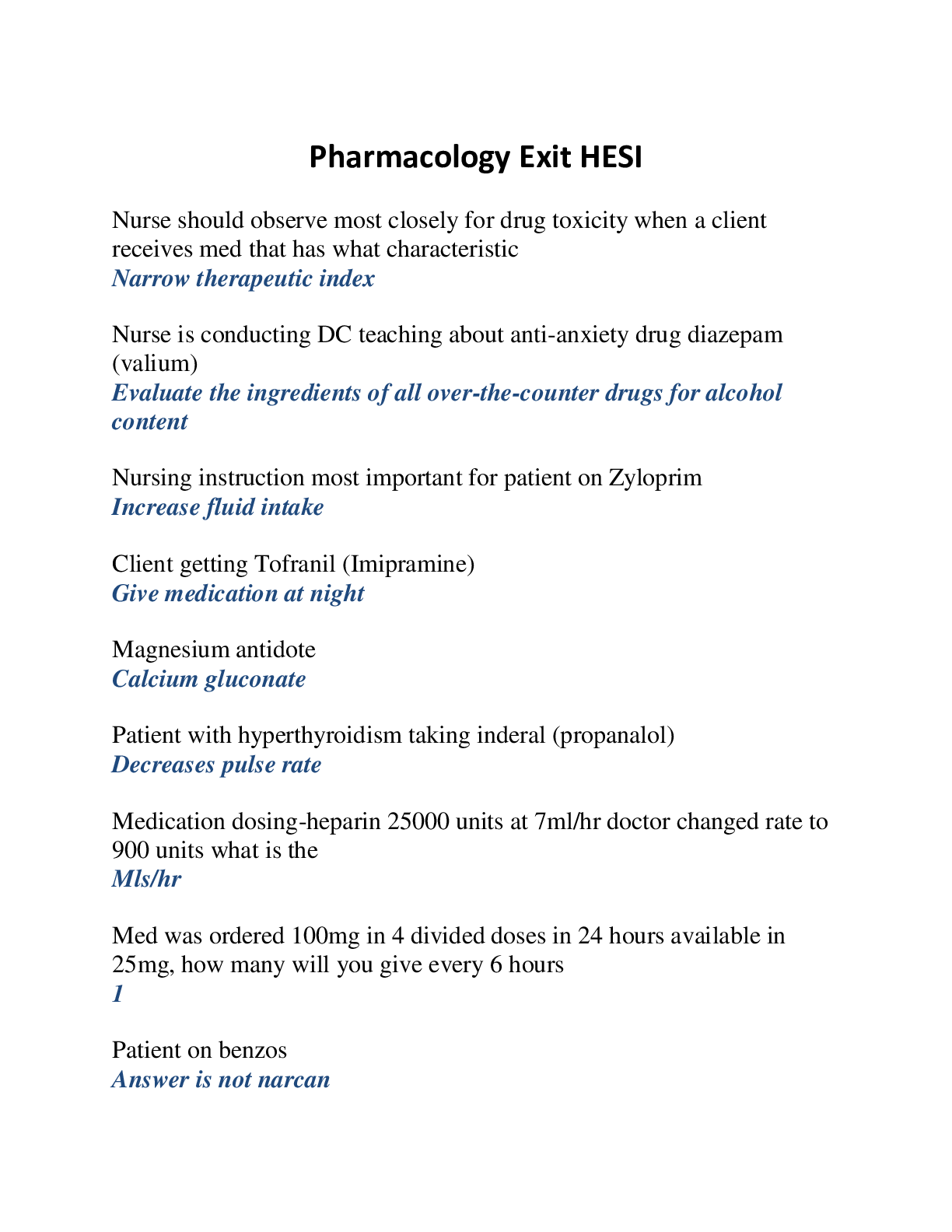
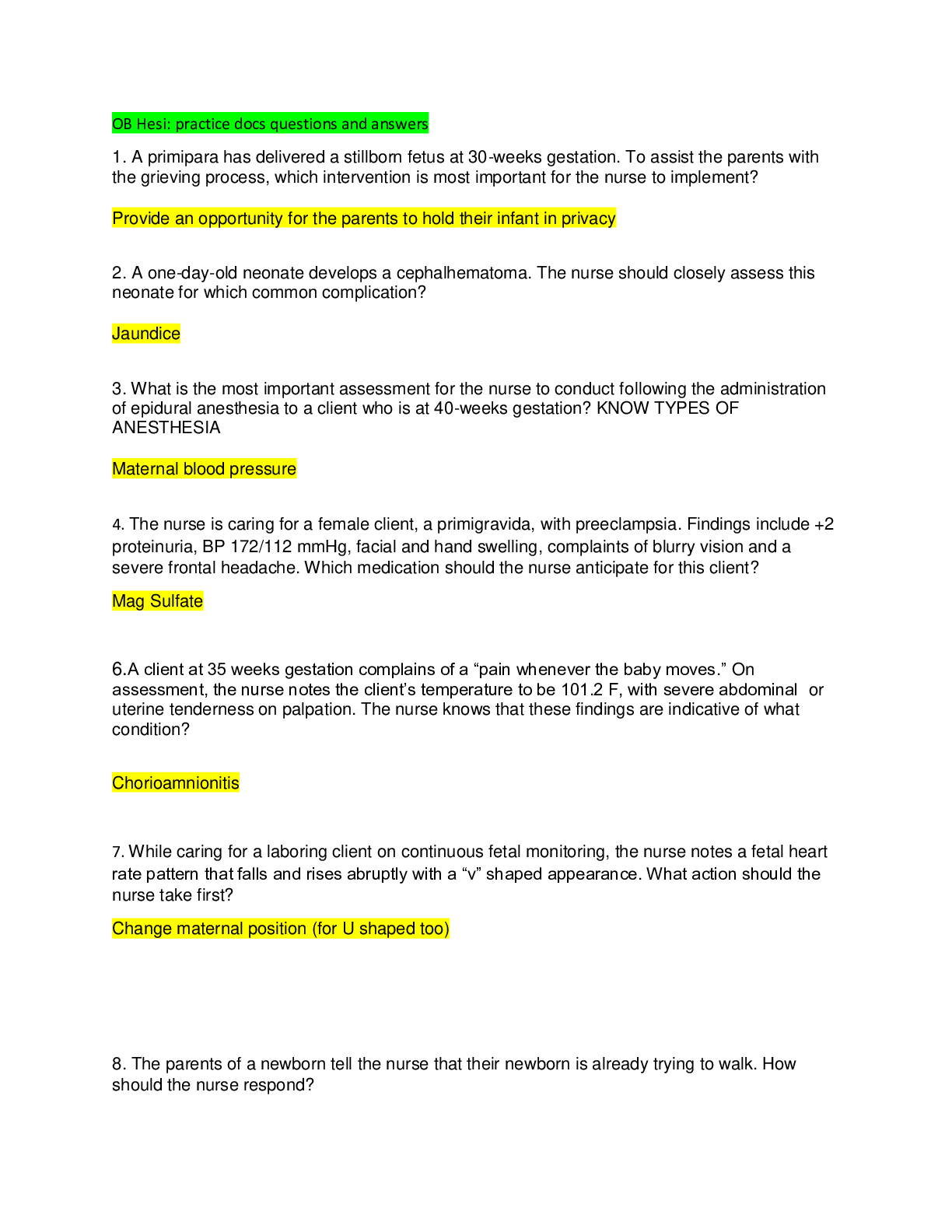

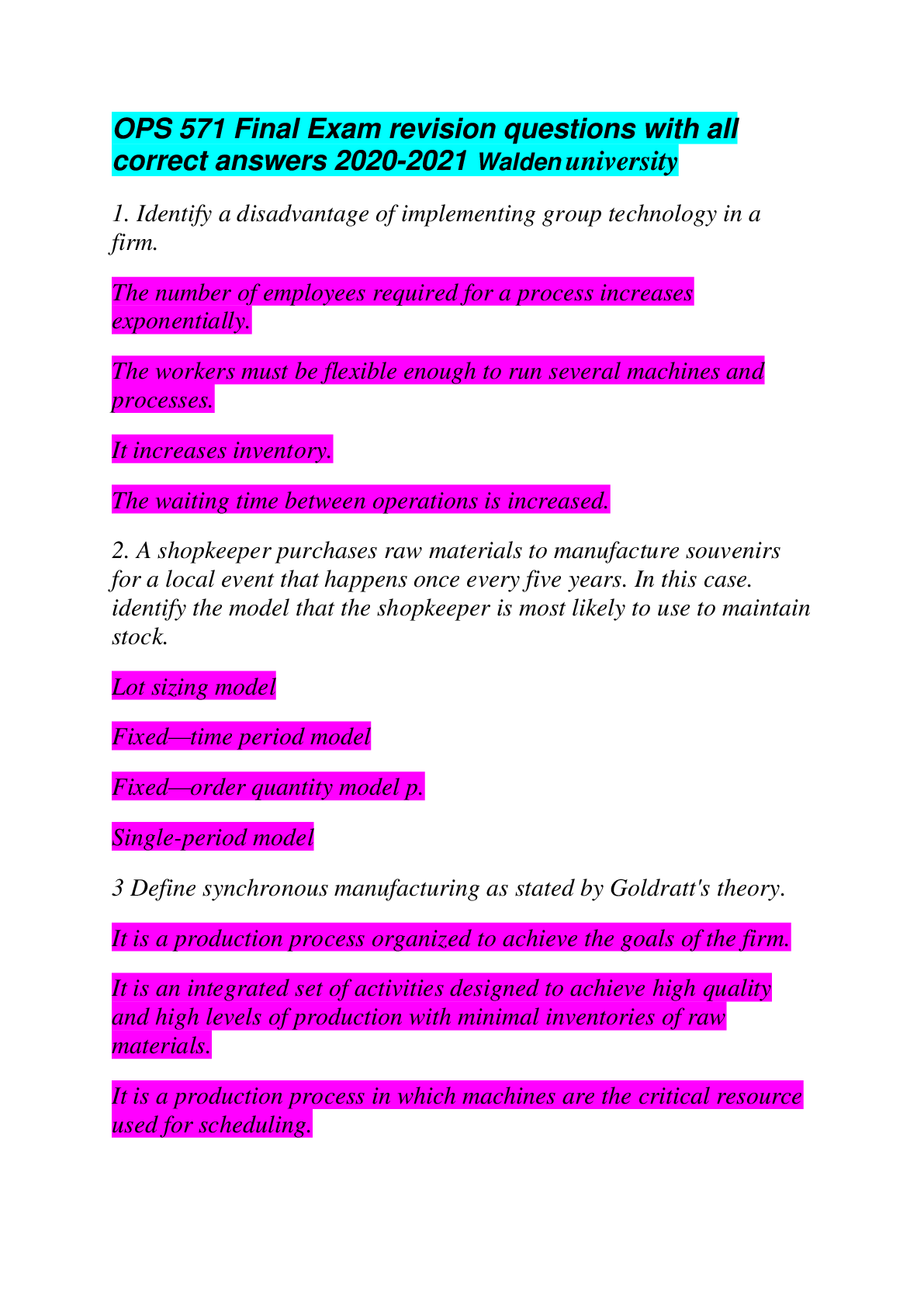
.png)

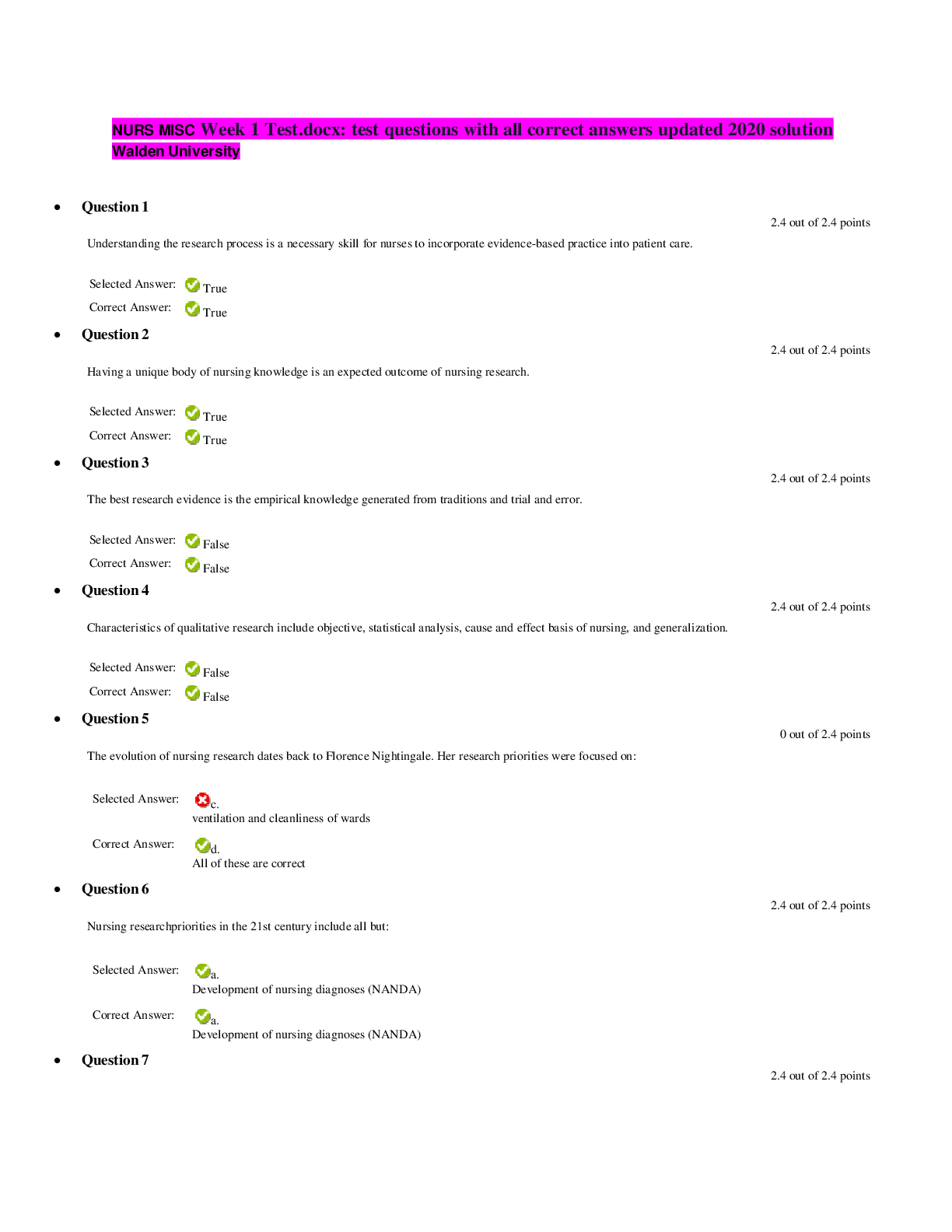

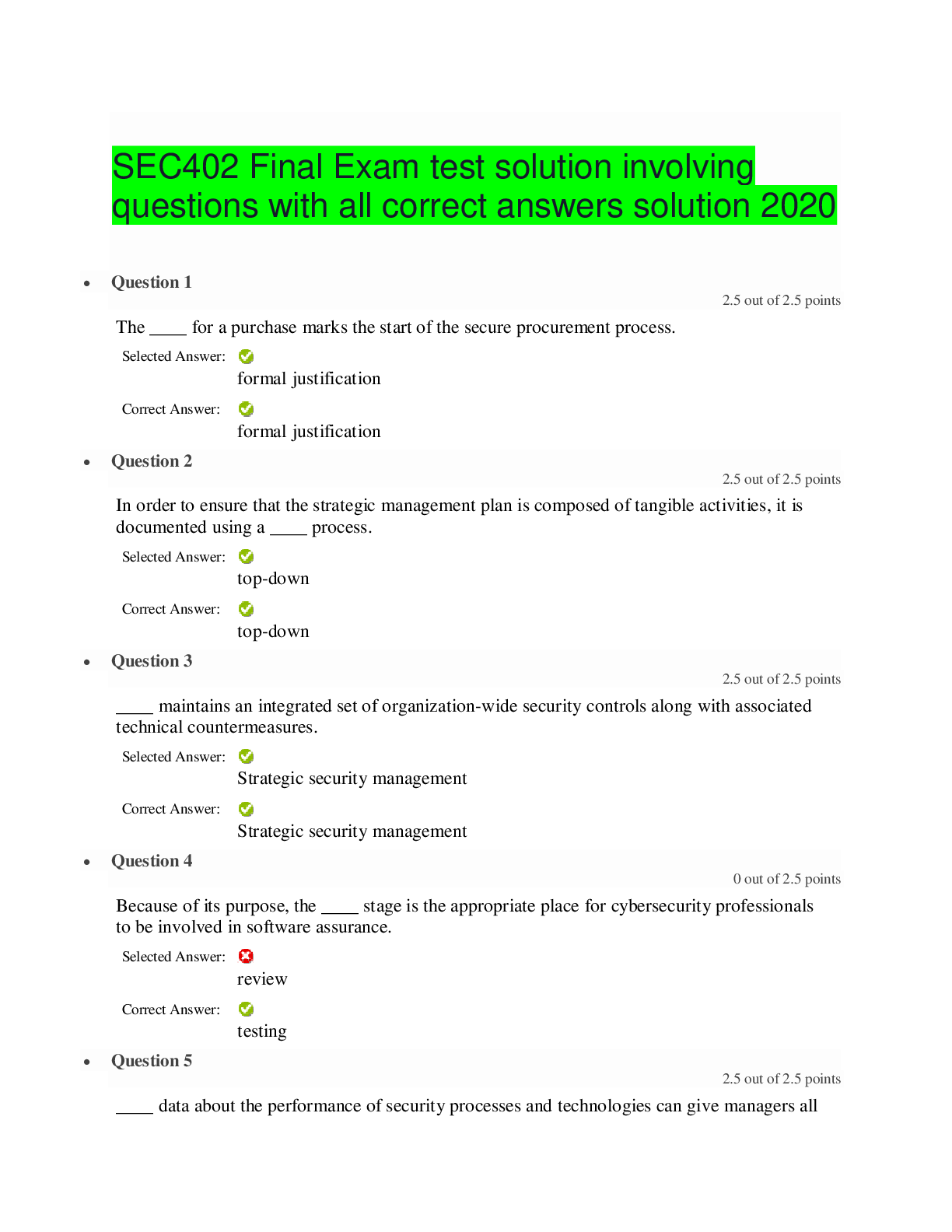


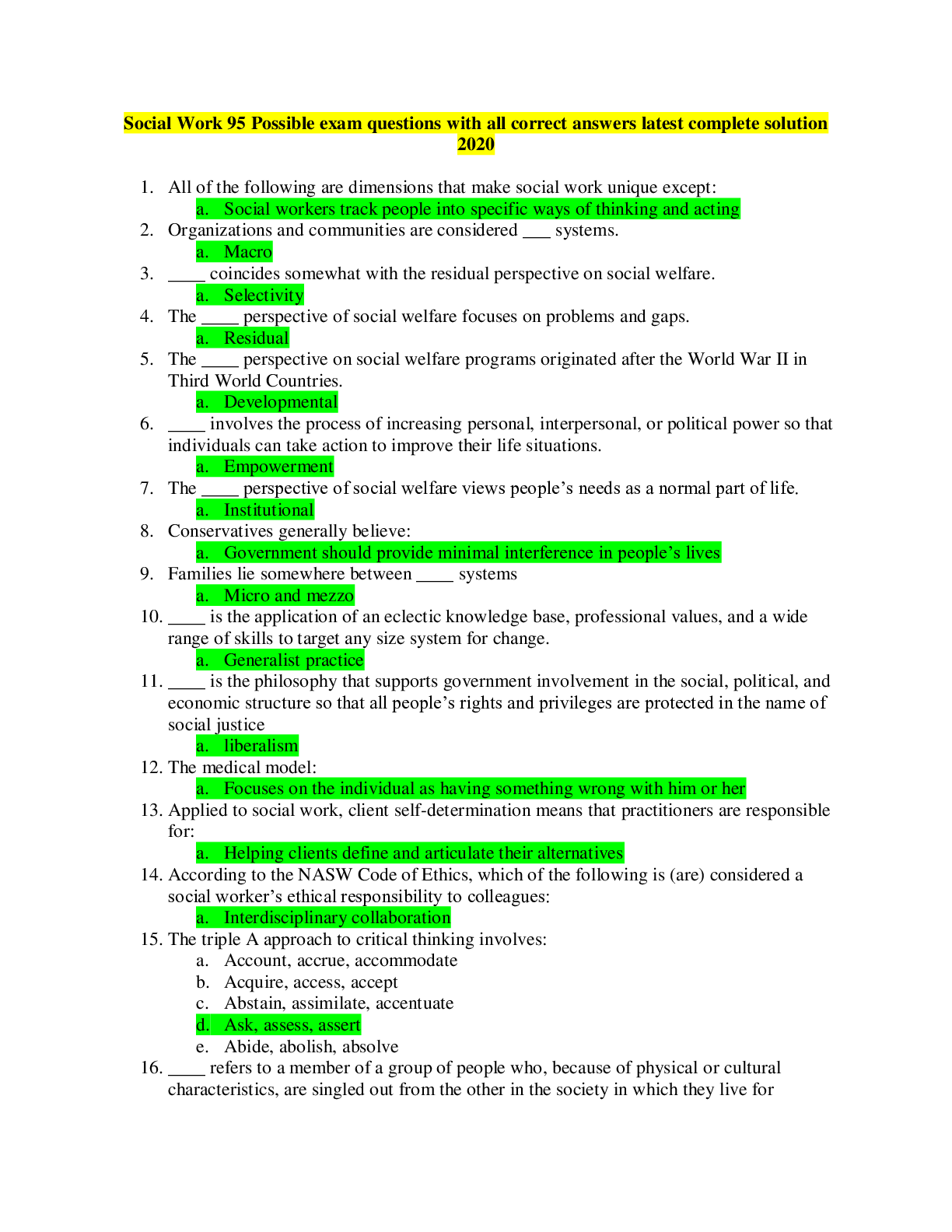
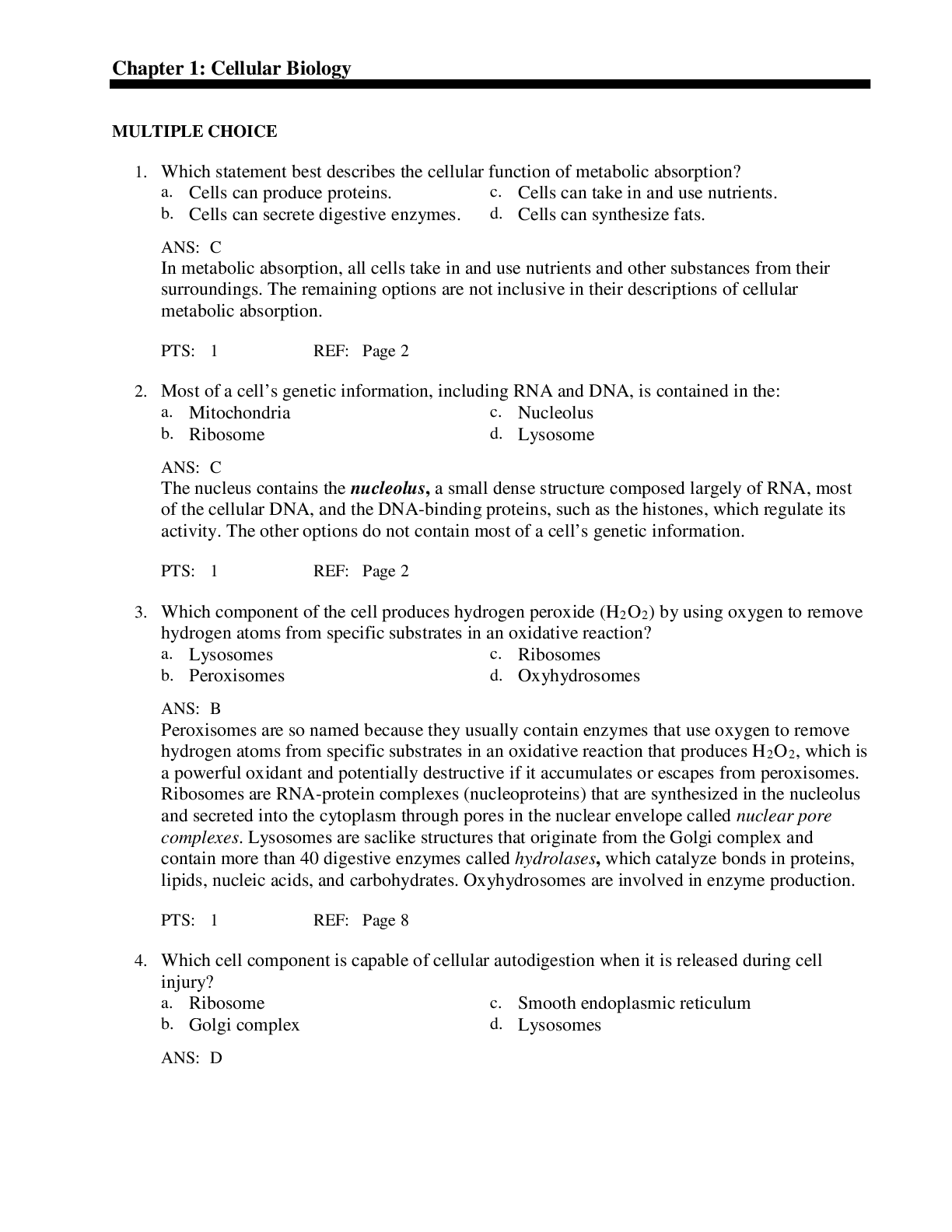
 answers.png)


